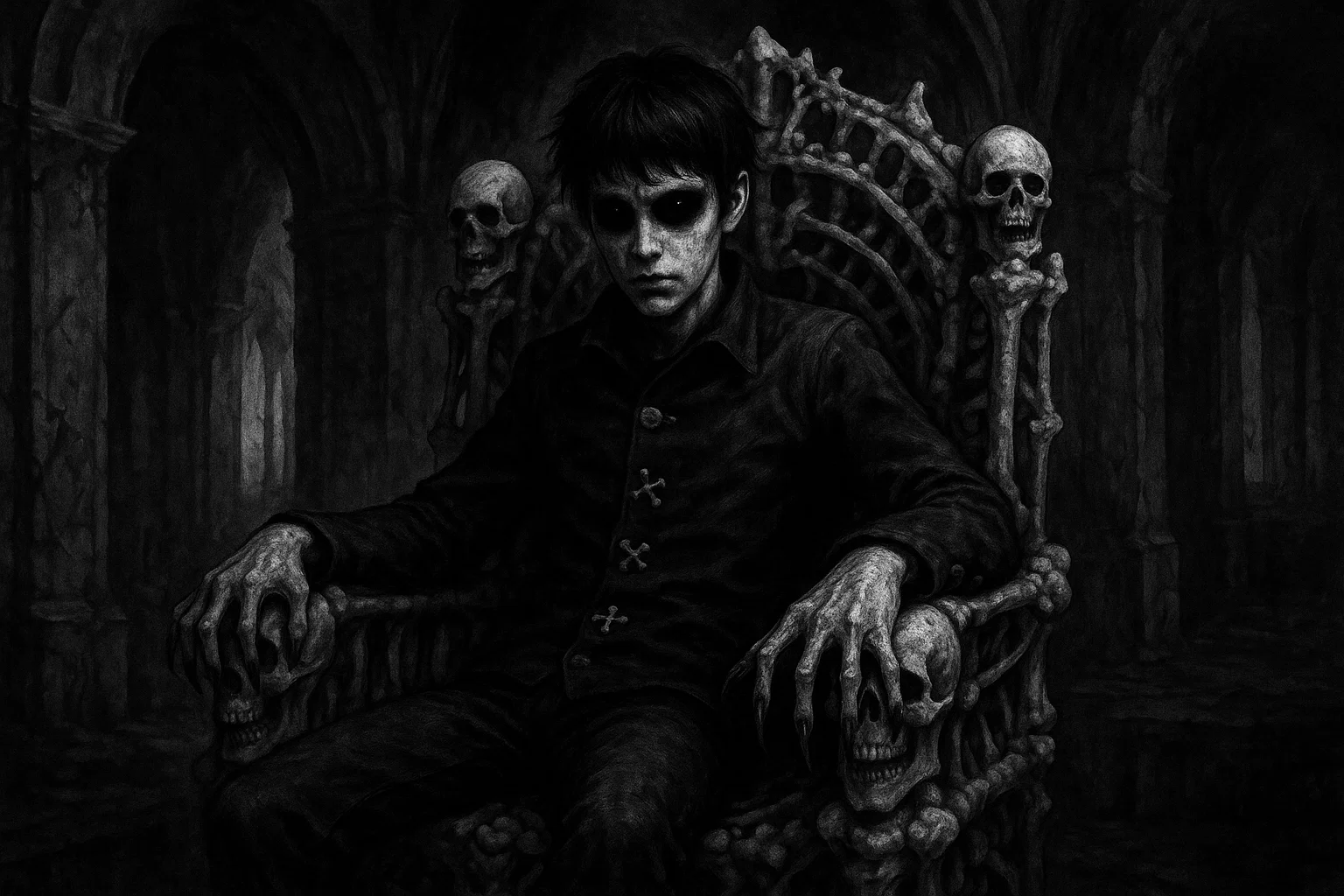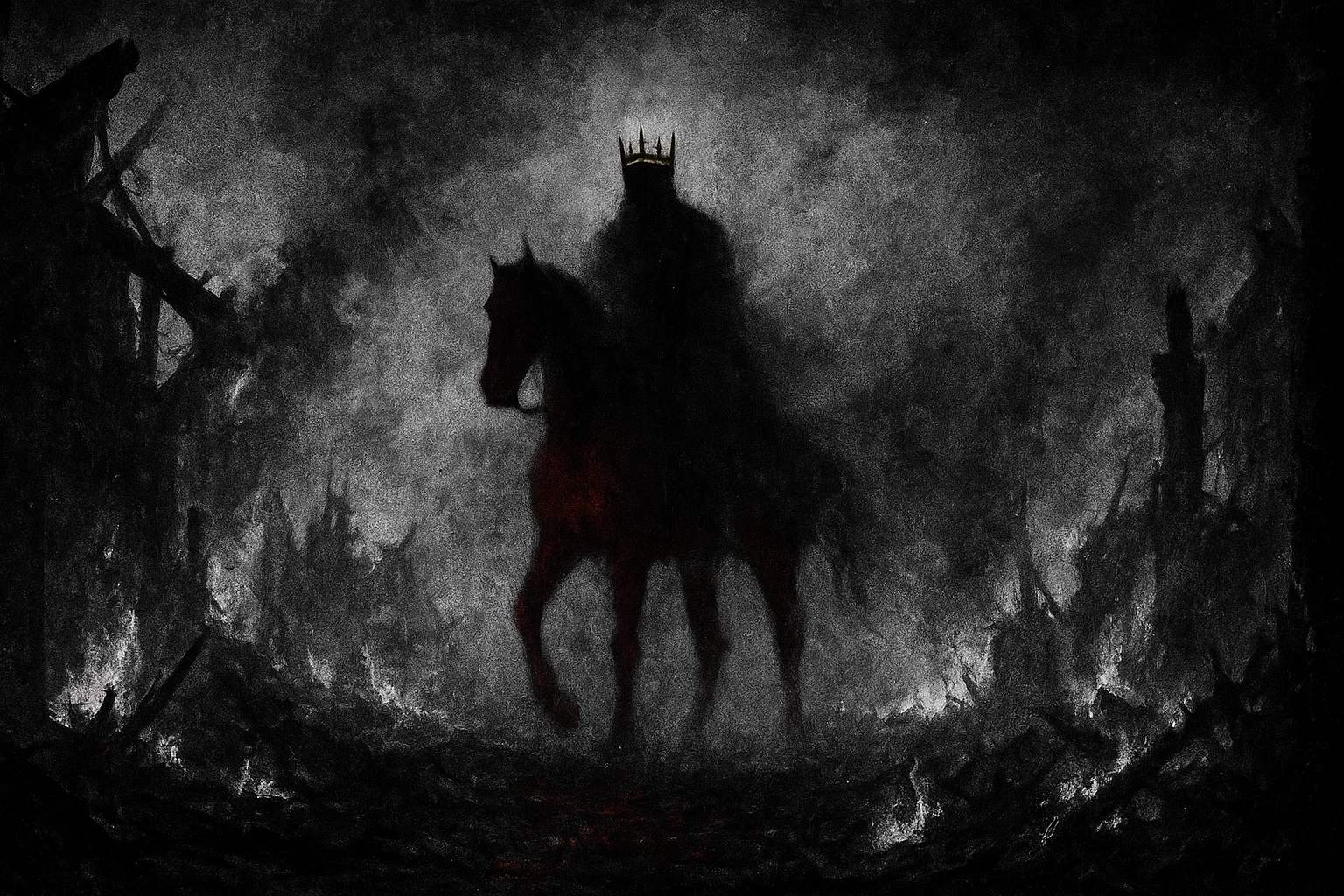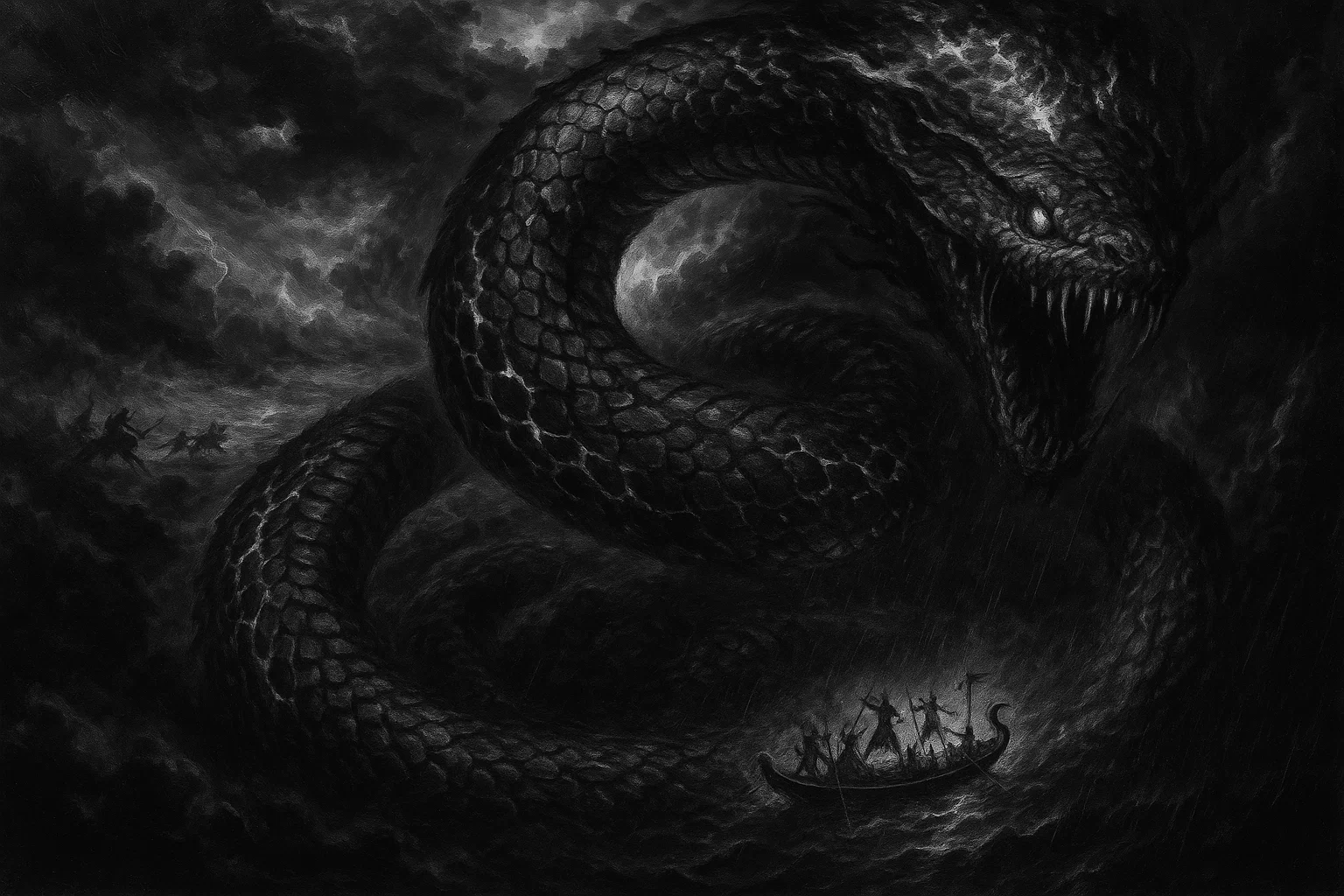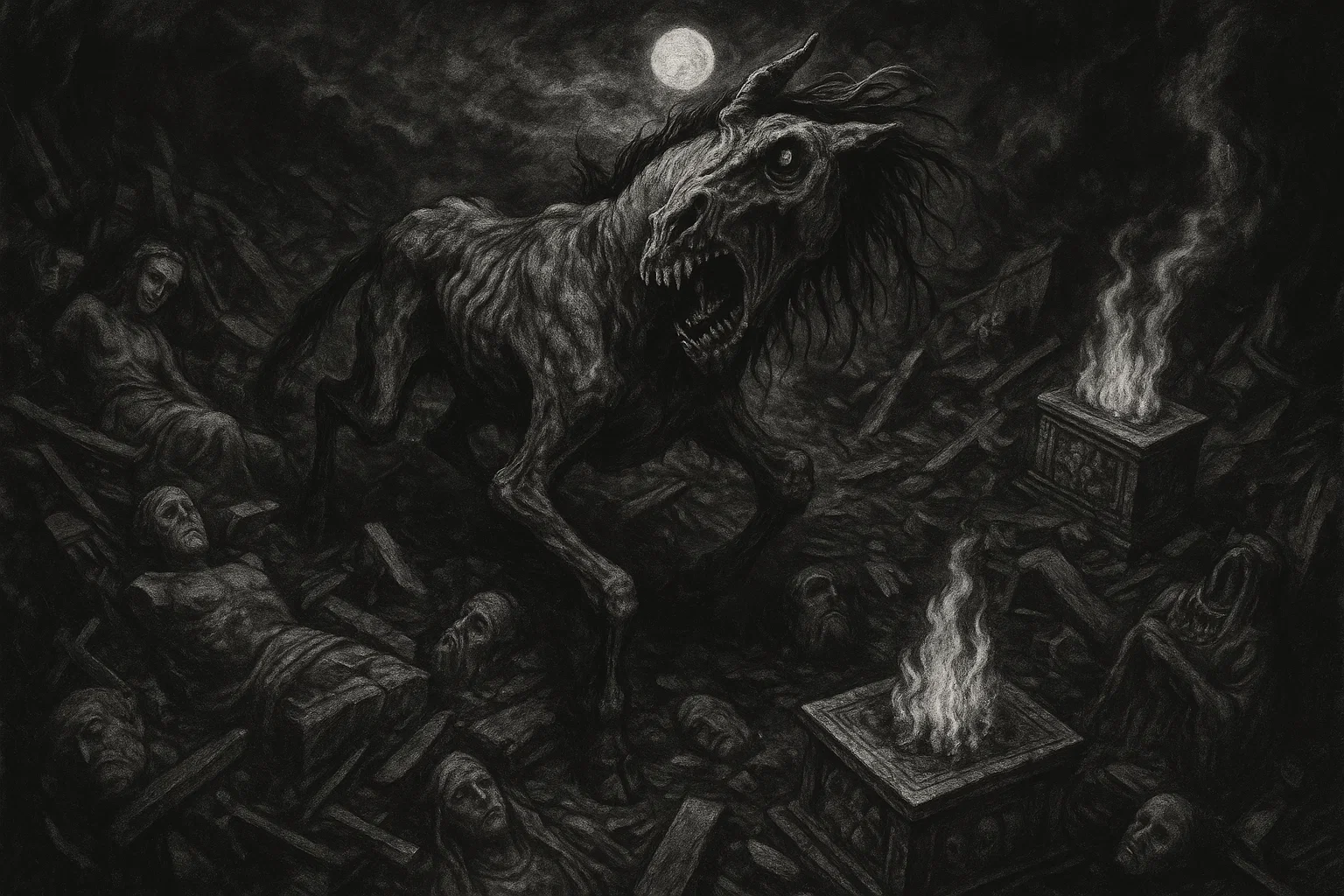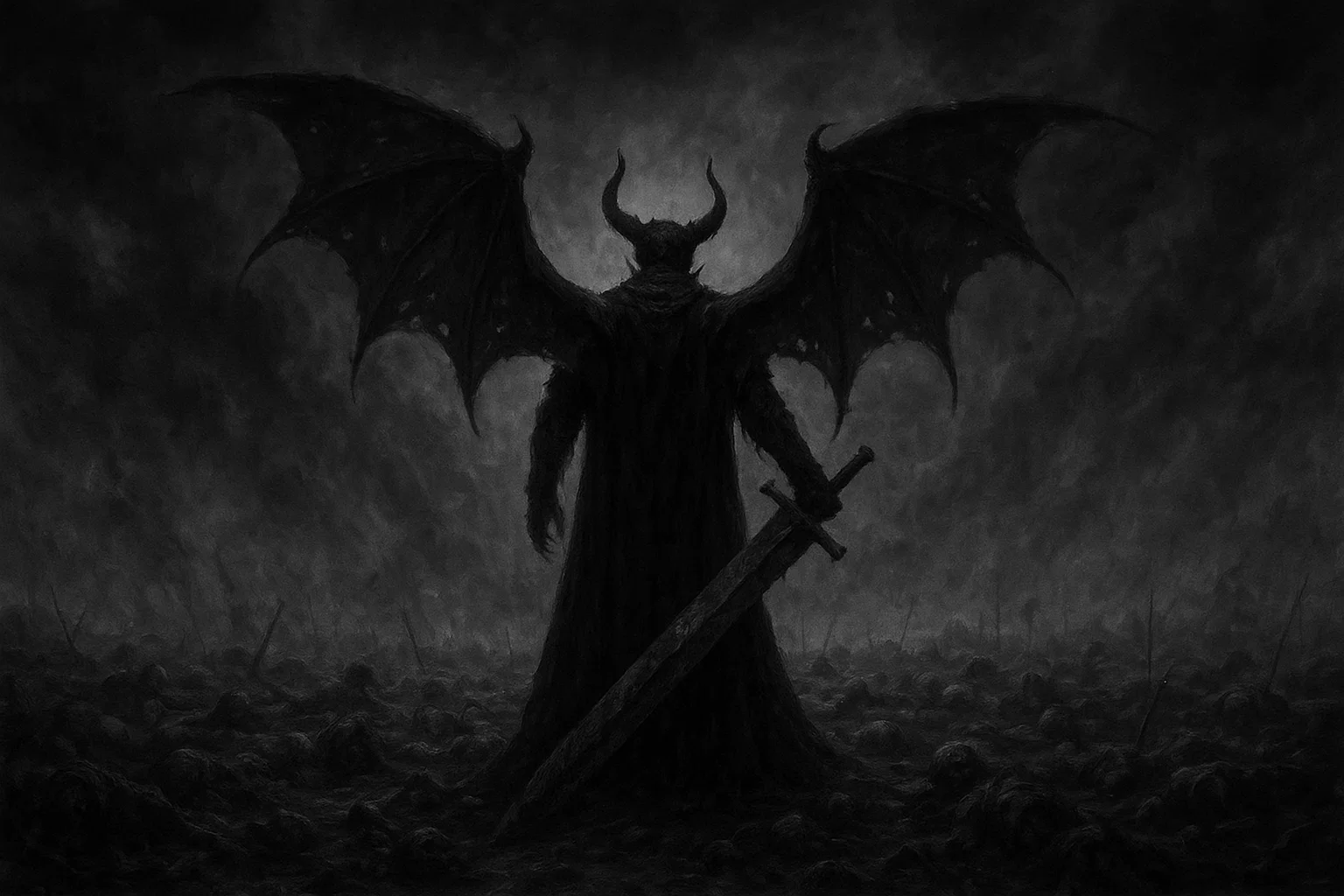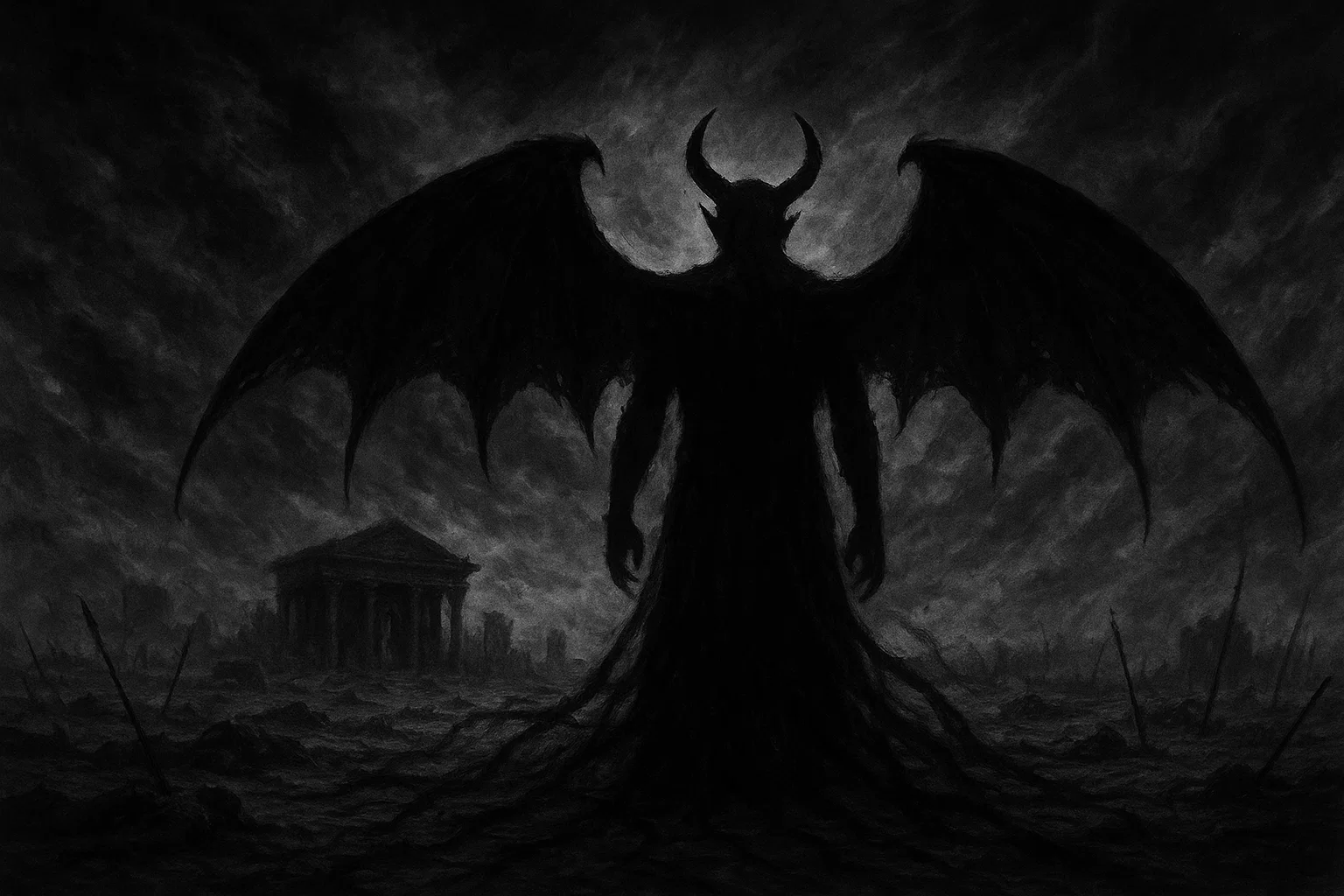Imagine a demon so powerful that even the formidable Asmodai must yield to his authority. Amaimon, also known as Amaymon or Amoymon, is one of the four kings of Hell, a towering figure in Goetic demonology whose influence spans ancient grimoires and modern fiction.
Ruling over the East or South, depending on the source, Amaimon commands a quarter of Hell’s forces and is renowned for his deceptive prowess and poisonous breath.
Who is Amaimon, and what secrets does this infernal king hold? This article delves into his origins, powers, and enduring legacy, offering a comprehensive exploration for scholars, occult enthusiasts, and fans of supernatural lore.
Table of Contents
Key Information About Amaimon
| Attribute | Details |
|---|---|
| Name | Amaimon (Amaymon, Amoymon) |
| Titles | Prince of Hell, King of Hell |
| Appearance | Not specified in traditional texts; modern depictions include green hair, claw-like nails (Blue Exorcist) |
| Pantheon | Goetic Demonology |
| Equipment/Tools | Not specified; associated with poisonous breath |
| Associated Gem | Ruby (power), Obsidian (protection) |
| Associated Color | Red (war), Black (mystery) |
| Astrological Influence | Aries (East), Leo/Sagittarius (South) |
| Equivalents | Linked to Egyptian god Amon-Ra |
| Alignment | Lawful Evil |
| Opposing Angel/Saint | Archangel Raphael, Saint Bartholomew |
| Number of Legions | Commands a quarter of Hell |
| Superior Demon | Lucifer or Satan |
| Region of Hell | East or South, depending on source |
What Is the Meaning of Amaimon’s Name?
The name Amaimon carries layers of meaning, reflecting his complex role in demonology.
Scholars suggest it may derive from the Hebrew “amon,” meaning “faithful” or “trustworthy,” an ironic twist for a demon known for deception. Another compelling theory links it to the Egyptian god Amon-Ra, a deity of creation and power, whose name was adapted into demonological texts like The Book of Abramelin.
This connection suggests a syncretic blending of ancient divine figures into Christian demonology, a common practice in medieval occultism.
Alternatively, some propose a Greek origin, with “amaimon” meaning “foolish” or “senseless,” though this seems less fitting for a king of Hell. The name’s phonetic strength, evoking authority and mystery, aligns with Amaimon’s status as a ruler.
Variations like Amaymon or Amoymon arise from scribal differences, but all preserve the name’s commanding presence.
Historical and Mythological Background
Amaimon’s story begins in the celestial rebellion, though his exact origins remain elusive.
He may have been a fallen angel or a demon born in Hell, but his immense power is undisputed, earning him the title of Prince and King of Hell. In Goetic demonology, he is one of four kings ruling the cardinal directions, alongside Oriens, Paimon, and Ariton (or Egin).
His directional association varies: The Book of Abramelin places him in the South, while Dr. Rudd’s Treatise on Angel Magic names him King of the East. This ambiguity reflects the fluid nature of demonological classifications, shaped by cultural and textual differences.
In Pseudomonarchia Daemonum, Amaimon is a chief among evil spirits, tied to deception and “abominable practices.” His authority over Asmodai, a prominent demon, is a defining trait, as noted in the Ars Goetia.
You May Also Like: 7 Reasons Moñái Might Be the Weirdest Cryptid in the World
During Asmodai’s evocation, summoners must show respect to Amaimon to avoid catastrophic deception, highlighting his commanding influence. The Book of Abramelin further elevates him as one of eight sub-princes, equating him to the Jewish demon Mahazael, suggesting a cross-cultural resonance.
Medieval Europe, gripped by fear of demonic forces, saw Amaimon invoked in occult practices, particularly during the witch trials (15th–17th centuries).
His role in Abramelin’s Holy Guardian Angel rite made him a focal point for magicians seeking divine knowledge, though his dangerous nature required strict ritual adherence.
Unlike Mesopotamian or Canaanite deities repurposed as demons (e.g., Baal), Amaimon appears to be a creation of the grimoire tradition, with possible influences from Egyptian mythology via Amon-Ra.
Historical Mentions of Amaimon
Amaimon, revered as a Prince and King of Hell in Goetic demonology, appears across a spectrum of grimoires and occult texts from the medieval period to the 19th century.
These works, authored or compiled by notable figures like Johann Weyer and Francis Barrett, highlight his role as a cardinal ruler, his deceptive nature, and his ritual significance.
The following table compiles all documented historical mentions of Amaimon, offering a chronological overview enriched with details about each text’s origins, authors, and context:
| Text/Grimoire | Year | Description | Notable Details |
|---|---|---|---|
| The Book of Abramelin | c. 1450 (translated 1898) | Sub-prince and one of eight principal demons, ruling the South | Attributed to Abraham of Worms, a Jewish mystic; equates Amaimon to Mahazael, a Jewish demon; central to the six-month Holy Guardian Angel rite; translated by S.L. MacGregor Mathers in 1898, boosting its influence in Western occultism |
| Liber Officiorum Spirituum | c. 1530–1583 | King of Hell, part of the infernal hierarchy | Compiled from 15th–16th-century manuscripts, predating Weyer’s work; lists Amaimon as a directional ruler, likely East or South; influential in shaping later grimoires like Pseudomonarchia Daemonum |
| Pseudomonarchia Daemonum | 1577 | Chief among evil spirits, associated with West or East | Authored by Johann Weyer, a Dutch physician and occultist; describes Amaimon as a powerful king linked to deception; written during the height of European witch trials, reflecting demonological fears |
| Grimorium Verum | Attributed to 1517, likely c. 1750 | King of Hell, commands spirits under Satanachia | Attributed to Alibeck the Egyptian, though likely an 18th-century French text; emphasizes Amaimon’s role in ritual summoning hierarchies; translated by Joseph H. Peterson in 2007, clarifying its structure |
| Ars Goetia (Lesser Key of Solomon) | c. 1650 (edited 1904) | Prince with authority over Asmodai, requiring ritual respect | Compiled in the 17th century from earlier sources; edited by Aleister Crowley and S.L. MacGregor Mathers in 1904; details Amaimon’s role in Asmodai’s evocation, emphasizing precautions like removing headgear |
| Treatise on Angel Magic | c. 1650s (published 2006) | King of the East, one of four cardinal rulers | Authored by Dr. Thomas Rudd, an English mathematician and occultist; aligns Amaimon with solar imagery and eastern dominion; published by Adam McLean in 2006, revealing its angelic-demonological synthesis |
| The Magus | 1801 | King of Hell, tied to Jupiter and eastern rulership | Written by Francis Barrett, a key figure in the 19th-century occult revival; integrates Amaimon into planetary and directional magic, influencing modern esotericism; published in London during a surge in occult interest |
| Dictionnaire Infernal | 1863 | King of the East, noted for fiery or poisonous breath | Authored by Jacques Collin de Plancy, a French occultist; 6th edition (1863) solidified Amaimon’s eastern role; reflects 19th-century fascination with demonology, blending folklore and scholarship |
The Book of Abramelin (translated by S.L. MacGregor Mathers, 1898):
The eight Sub-Princes are: Astaroth, Magoth, Asmodee, Beelzebub, Oriens, Paimon, Ariton, and Amaimon.
Pseudomonarchia Daemonum (Johann Weyer, 1577):
“Amaymon is a great and mightie king, and hath power to doo manie things, which are not here expressed; he is said to be of the West, or East, and to be verie evill.”
Grimorium Verum (attributed to 1517, likely 18th century):
The chief spirits are Lucifer, Beelzebub, and Astaroth; under them are Satanachia, Agaliarept, and Amaymon, who rule in the East and South.
Ars Goetia (Lesser Key of Solomon, 17th century):
“When the Exorcist hath a mind to call him, let it be abroad, and let him stand on his feet all the time of action, with his Cap or Head-cloath off; for if it be on, Amaymon will deceive him and cause all his actions to be bewrayed.”
Dictionnaire Infernal (Jacques Collin de Plancy, 1863):
“Amaymon, roi des enfers orientaux, est l’un des quatre princes cardinaux; il est connu pour son souffle ardent et sa puissance sur Asmodée.”
Translation (for context, not quoted):
Amaymon, king of the eastern hells, is one of the four cardinal princes; he is known for his fiery breath and power over Asmodeus.
What Does Amaimon Look Like?
Traditional grimoires like Ars Goetia and The Book of Abramelin do not provide a specific description of Amaimon’s appearance, a common trait for high-ranking demons whose power transcends physical form. His lack of a defined visage allows summoners to project their fears or expectations, enhancing his mystique.
Occultists speculate he might manifest as a regal figure, perhaps cloaked in red or black to reflect his authority, or as a spectral entity exuding fiery or toxic energy, given his poisonous breath.
You May Also Like: Red-Room.exe | Horror Story
In modern media, Amaimon takes on vivid forms. In Blue Exorcist, he appears as a teenage boy with dark green hair featuring a lighter spike, long claw-like fingernails, and a jacket with cross-bone buttons.
His demonic form is more monstrous, with green skin, red markings, horns, and an alligator-like tail, emphasizing his primal power.
Amaimon’s Powers and Abilities
Amaimon’s powers befit his status as a king of Hell, as detailed in historical texts:
- Authority Over Asmodai: He uniquely holds power over Asmodai, a key demon in Goetic lore, asserting his dominance.
- Deception: Known for deceptive practices, he can doom rituals if not respected, as noted in Ars Goetia.
- Poisonous Breath: His fiery or toxic breath requires protective measures, such as a silver ring, per Pseudomonarchia Daemonum.
- Command of Hell’s Forces: He governs a quarter of Hell, overseeing vast legions, though specific numbers are not detailed.
- Ritual Influence: His presence in Abramelin’s rites suggests he aids in spiritual or magical tasks, albeit with risk.
Amaimon’s Role in the Hierarchy of Hell
As a Prince and King of Hell, Amaimon occupies the pinnacle of the infernal hierarchy, ruling alongside Oriens, Paimon, and Ariton. His dominion over the East or South grants him authority over a quarter of Hell’s forces, a role that surpasses lesser demons like dukes or marquises.
Servants such as Asmodai and Gaap may fall under his command, though texts vary on these relationships.
Amaimon answers to Lucifer or Satan, the supreme ruler, positioning him as a key enforcer of Hell’s will.
Astrological Associations and Correspondences
Amaimon’s astrological ties, while not explicitly detailed in grimoires, can be inferred from his directional roles.
His association with the East suggests a link to Aries (March 21–April 19), ruled by Mars, symbolizing war, aggression, and initiative. These traits align with Amaimon’s commanding nature and deceptive prowess.
Alternatively, his southern association points to Leo (July 23–August 22), ruled by the Sun, representing authority, vitality, and leadership, or Sagittarius (November 22–December 21), ruled by Jupiter, symbolizing expansion and wisdom. These signs reflect Amaimon’s dual roles as a warrior and ruler.
The symbolism of Aries evokes a fiery, assertive energy, mirroring Amaimon’s poisonous breath and martial dominance. Leo’s regal qualities complement his kingly status, while Sagittarius’s quest for knowledge aligns with his role in Abramelin’s spiritual rites.
You May Also Like: Kali Oka and Oak Grove Plantations Haunting: Ghost Stories from Saraland, Alabama
Mars fuels his aggressive tendencies, the Sun enhances his authoritative presence, and Jupiter supports his expansive influence over Hell’s domains.
Amaimon’s correspondences further enrich his profile. The color red symbolizes war and power, resonating with his martial and deceptive traits, while black represents mystery and the infernal depths.
Gems like ruby, associated with strength and protection, and obsidian, known for warding off negative energies, suit his regal and dangerous nature.
Metals such as iron (linked to Mars) and gold (tied to the Sun) reflect his strength and authority. His time of power likely peaks in spring (Aries) for new beginnings or summer (Leo) for maximum vitality, with rituals best performed at dawn (East) or midday (South) to align with his directional energies.
The following table summarizes these correspondences:
| Correspondence | Associated Item | Meaning |
|---|---|---|
| Zodiac Sign | Aries (East), Leo/Sagittarius (South) | Aries: War, initiative; Leo: Leadership, vitality; Sagittarius: Expansion, wisdom |
| Planet | Mars (Aries), Sun (Leo), Jupiter (Sagittarius) | Mars: Aggression, power; Sun: Authority, radiance; Jupiter: Growth, knowledge |
| Color | Red, Black | Red: War, power; Black: Mystery, darkness |
| Gem | Ruby, Obsidian | Ruby: Strength, protection; Obsidian: Warding negative energies |
| Metal | Iron, Gold | Iron: Strength, endurance; Gold: Authority, wealth |
| Time of Power | Spring (Aries), Summer (Leo) | Spring: Beginnings, growth; Summer: Peak vitality, dominance |
How to Summon the Demon Amaimon?
Summoning Amaimon is a high-stakes endeavor, reserved for seasoned practitioners due to his immense power and deceptive nature.
In the Ars Goetia, a key ritual detail emerges during the evocation of Asmodai: the summoner must stand upright with their cap or headdress removed as a sign of respect to Amaimon.
Failure to do so invites deception, dooming the ritual. Additionally, Pseudomonarchia Daemonum advises wearing a consecrated silver ring on the middle finger to protect against Amaimon’s fiery or poisonous breath, a precaution also recommended for Bileth.
In The Book of Abramelin, summoning Amaimon is part of the Holy Guardian Angel rite, requiring a six-month purification process of prayer, fasting, and isolation.
Practitioners use Amaimon’s sigil—often a symbolic representation of the East or South, such as a rising sun or flame—along with offerings like myrrh incense or red candles to align with his energies.
A protective circle of salt or chalk is essential to contain his power, and invocations must be precise to avoid his wrath.
Amaimon Sigil
Amaimon’s sigil is not explicitly detailed in traditional grimoires, reflecting his high rank and the focus on his directional authority rather than a specific symbol.
In modern occult practices, his sigil may incorporate elements like a rising sun (East) or a flame (South), drawn in red or black ink to channel his power. These designs symbolize his dominion and fiery nature, serving as a ritual focal point.
You May Also Like: Smurl Family Haunting: A Demonic Nightmare in Pennsylvania
Practitioners place the sigil on altars or wear it as a talisman, ensuring alignment with Amaimon’s energies while maintaining protective measures.
Amaimon in Modern Media and Pop Culture
Amaimon has transcended ancient texts to appear in modern media, most notably in the anime Blue Exorcist. Here, he is one of the Eight Demon Kings, titled the King of Earth, with a playful yet dangerous personality.
His teenage human form and monstrous demonic appearance have made him a fan favorite, bridging ancient demonology with contemporary storytelling.
In occult literature, such as Michelle Belanger’s Dictionary of Demons, Amaimon is noted as a powerful demon, though less prominent than Paimon or Bael.
Comparison of Amaimon with Other Demons
Amaimon, as a Prince and King of Hell, holds a commanding position in Goetic demonology, with unique powers like authority over Asmodai and deceptive prowess.
| Demon Name | Key Powers | Hierarchy Rank | Opposing Angel |
|---|---|---|---|
| Agares | Causes earthquakes, teaches languages, controls movement | Duke | Archangel Michael |
| Akesoli | Inflicts pain, executes Amaimon’s commands | Servant | Archangel Uriel |
| Alloces | Teaches astronomy and liberal sciences, provides familiars | Duke | Archangel Michael |
| Paimon | Teaches arts and sciences, grants visions, binds men | King | Archangel Raphael |
| Vassago | Reveals past and future, good-natured disposition | Prince | Archangel Gabriel |
| Amon | Procures feuds, reveals past and future | Marquis | Archangel Michael |
| Barbatos | Understands animal voices, finds treasures | Duke | Archangel Uriel |
| Bael | Grants invisibility, imparts wisdom, leads armies | King | Archangel Raphael |
| Asmodai | Teaches geometry and sciences, reveals treasures, grants invincibility | King | Archangel Raphael |
| Eligos | Discovers hidden things, provides war strategies | Duke | Archangel Gabriel |
Conclusion
Amaimon, the Prince and King of Hell embodies the awe-inspiring power and mystery of Goetic demonology. From his authority over Asmodai to his poisonous breath and command of Hell’s vast regions, he remains a figure of fear and fascination.
Ancient grimoires like Ars Goetia and The Book of Abramelin paint him as a ruler to be respected, while modern media like Blue Exorcist bring his legacy to new audiences.

